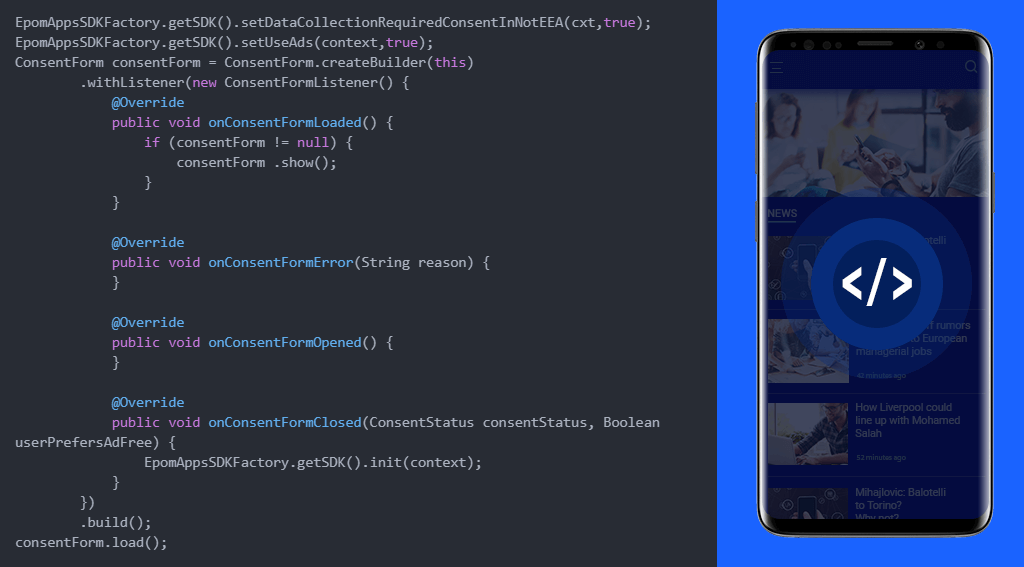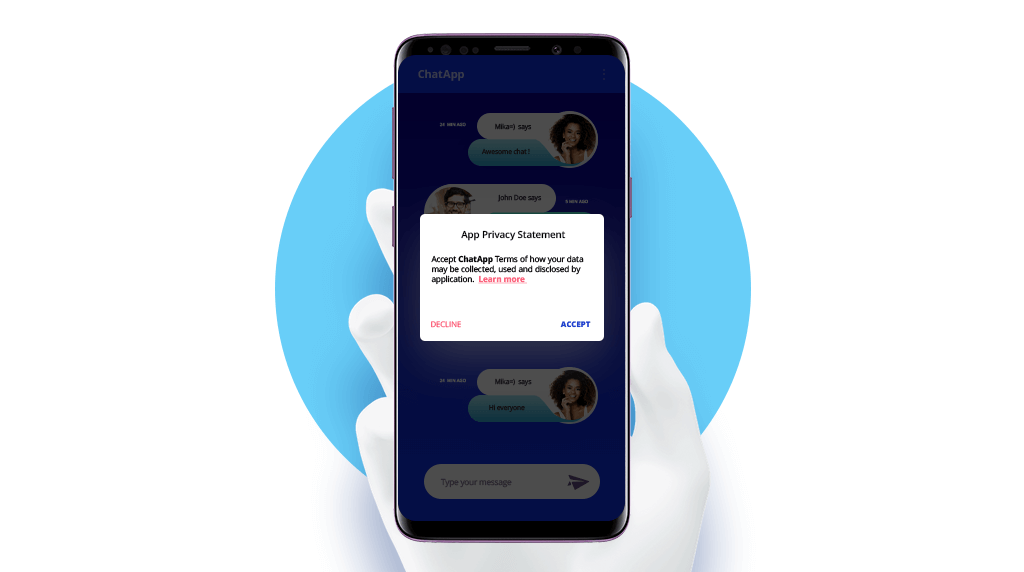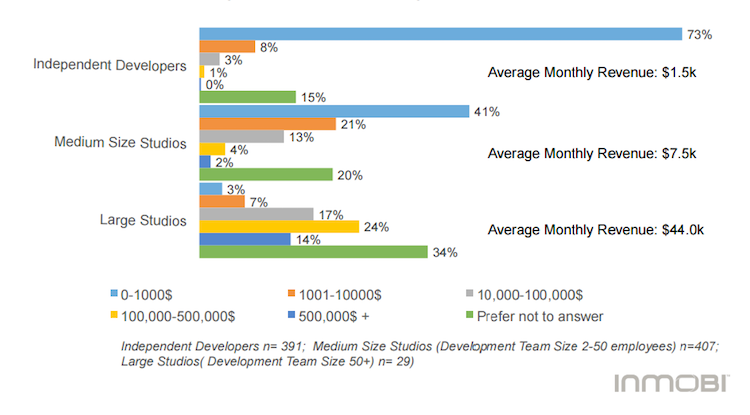3 winning monetization strategies for the application in 2019

The main pain of a developer is to understand why his monetization strategy worked yesterday and earned income, and suddenly ceased. January is the perfect time to wake up from hibernation and rethink your monetization strategy. Below, we have prepared an overview of three winning strategies that will help mobile applications earn more in 2019.
In 2018, the average American user spent more than 3 hours a day with a device in hand, which is 10% longer than in 2017. In 2019, analysts assume that the average duration of interaction with mobile devices will be 5-6 hours per day. This fact sounds bad for offline life, but it creates a bunch of new opportunities for application developers.
And all because the user spends 90% of online time in mobile applications. Many believe that users do not spend money in applications, but shopping statistics on Black Friday says something else. Last November, Candy Crush Saga earned $ 59 million just from Google Play. With a profit of 37 million dollars, Tinder ranked third in the list of 10 most profitable applications.for Android for November 2018.
App Annie predicts user purchases in applications worldwide will raise $ 76 billion (20% more than in 2017). The numbers do not lie - if we really like the app or we are used to it, we do not mind paying for using it.
But user loyalty is a volatile currency. As a user of the application, I don’t want to see ads on every screen, but as the owner of the application I want to monetize each user. Let's look at ways that preserve the karmic balance between UX and monetization.
Strategy No. 1. Monetization of user data: earnings without advertising
Data monetization is one of the non-obvious ways to effectively monetize an application. User data is the main asset for determining business priorities and improving existing products and services.
Large companies, opinion polls centers and other vendors are willing to pay for data on the target audience and most often work through intermediaries like Appgrow .
Developers, on the other hand, have the advantage of transferring non-personal user data to resellers, receiving a fixed price for each user. Mobile application developers have access to a huge amount of user data that is difficult to monetize. For example, OS version, screen size, device type, RAM / ROM and others.
Monetization of user data in the application means the collection, segmentation and transfer of non-personal information about users to data collectors. Monetizing “healthy person” data does not involve the transfer of personal information, and users remain anonymous.
Non-personalized data that third parties collect about users includes:
- Device type
- Device version
- Screen size
- Mobile operator
- Connection type
- CPU Serial Number
- RAM, ROM;
- A country
- IP
Important! A third party never collects more data than you are willing to provide. You yourself set up one-time types of data about users, which will later be transferred to companies.
For date collectors, the amount of data is important - the more they collect, the more accurate they become. This is the main reason that applications with high DAU (more than 70,000) have a higher priority for date collectors and bring in extra $ 800 of additional revenue to developers.
Starting developers on this and begin to monetize the application, having less than 10,000 DAU, and quickly become disillusioned. It is necessary to send strength to ASO and other methods of attracting users, and when the application reaches 50,000 DAU, add an SDK to monetize data and receive passive income.
There are two different ways to monetize data in an application: direct data transfer to companies and selling data to intermediaries. Companies rarely work directly with developers, but if you have 5+ applications with a total DAU of more than 600,000 users, it is much easier to start a partnership.
The second option is to work through an intermediary who already cooperates with global brands, telecommunications companies, research institutes, marketing specialists, etc. There are three main intermediaries in this area: Appgrow, Tutela, Accenture. They give one SDK for monetization, which is consistent with any other SDK, does not eat the phone battery and weighs almost nothing.
Below is a short guide for a developer on how to prepare user consent for the monetization of the application (still remember that for the monetization of data you need the explicit consent of the user?).

Users will see this form when they open your application and decide for themselves whether to share non-personal information or not.

The main advantages of data monetization:
- Data monetization is suitable for any category of mobile applications.
- The niche is not yet so competitive, and the prices for CPM are much higher than in mobile advertising.
- The main feature in the monetization of the application - no need for continuous optimization. The whole process takes place on the background, without affecting the UX and advertising.
- Every month you get income for each user who agreed to transfer their data. The same users can be monetized from month to month.
- The SDK weighs only 50Kb and does not eat the memory and battery of the smartphone.
If you decide to monetize data in 2019, start expanding your user base today. This income calculator will help you calculate how much your application can earn with data monetization.
Strategy No. 2. Monetization with the help of advertising: smart banners, native advertising and mobile video.
The amount of time users spend on smartphones and tablets is growing, and advertising in mobile applications is becoming the main source of conversions for advertisers. In-app advertising is three times more efficient than desktop, so all budgets have shifted towards mobile advertising. Thanks to huge investments by advertisers, by 2021 it is expected that the mobile application market will become the third largest in the world in terms of capital investments.
It is not surprising that every second person in the IT community wants to create an application that would bring a huge income. The problem is that applications that pay off and generate income are only 21%, another 19% bring zero income, and 32% profit up to $ 500 per month. But the average salary of developers:

Reading this data, it is not surprising that only 31% of mobile application developers are satisfied with their advertising revenue. Therefore, the importance of advertising in the application is difficult to overestimate: in-app traffic is converted several times better than the desktop, respectively, CPM is higher.
The trends in mobile advertising have remained unchanged for several years now: maximum nativeness, integration into the UX, and a reasonable restriction of advertising to a unique user in a single session.
According to BusinessofApps, the share of native advertising (advertising disguised as application content, that is, advertising is not native in content but in design) in mobile applications grows by 2-3% per year and by 2020 should take 63% of total advertising.

According to statistics, the average cost per thousand impressions for mobile advertising in the United States is about $ 1.5 on mobile sites, and in applications their rates can reach $ 3.50.
An interesting format that is worth paying attention to is the smart banner, which is an updated version of the standard banner. While the good old banners have a fixed size, width and height, smart banners dynamically adjust to the size and position of the screen of the mobile device.

According to an IAB study , half of advertisers plan to increase spending on digital video, mobile video and OTT. Video advertising is still the fastest growing format of mobile advertising and rewarded videos - its ideal embodiment in the application.
The scheme of work here is simple: at a certain point, the user is offered to watch a video in exchange for a bonus. For games, this can be an extra life or virtual currency, and for utilities it can be an ad for a couple of days off.
The main things to keep in mind when effectively monetizing the application:
- Analyze the interests and behavior of your users before proceeding to the choice of advertising formats.
- Think about the place and time of advertising. Make sure that the advertisement does not adversely affect the UX.
- Try different ad formats to determine what works best for your application.
- Do not overdo it with advertising: the “the more the better!” Strategy does not work in the long run.
- Try advertising mediation with a lot of demand for maximum advertising effect.
Advertising in applications is now perceived by users as the lesser of the evils, so keep a balance and do not be afraid to experiment with formats.
Strategy number 3. Shopping inside applications
If data monetization or advertising is not very suitable for you, then in-app purchases are a proven strategy that allows you to take your income to a new level. Purchases in the app include various buns that you can sell in your app. For example, premium features, virtual currency, extra life for a hero, or any other consumables that can be spent in your application.
It is important to show buying recommendations when the user needs these items the most.
Subscription and freemium are ways of shopping in the app. Freemium offers free basic functionality and the ability to update the application to its premium version. Spotify Music, Tinder and Evernote have been using these methods for a long time, so if you have not tested them in the application yet, now is the time. In November, Tinder earned about $ 37 million, suggesting that users upgrade their free app to Plus and Gold versions.

Subscriptions are often the main monetization strategy for streaming video and audio applications, fitness applications, cloud services and online magazines such as The NY Times.
According to data, only 5% of usersspend money on in-app purchases. It sounds bad until you know that the annual consumption of iOS users for in-app purchases in 2017 amounted to 86 billion dollars.
The average amount spent per user in a gaming application is $ 0.33 and $ 2.68 for e-commerce applications. Therefore, it makes sense for developers to pump purchases in an application in two cases: if the mechanics of the application allows us to offer real value to the user, and if there are not so many alternatives to your application on the market and user engagement is consistently high.
Sometimes it makes sense to add a reward for achievements for which you need to make several purchases in the application.
In general, the year 2019 will become important for those mobile applications that have been working in the old fashioned way for a long time, but since the end of 2018, the income from applications has stopped bringing as much money as before. This is a time of experimentation, ASO and increasing competition. And if you have been working with one of the above strategies for a long time, this year it makes sense to add a few new variables.
